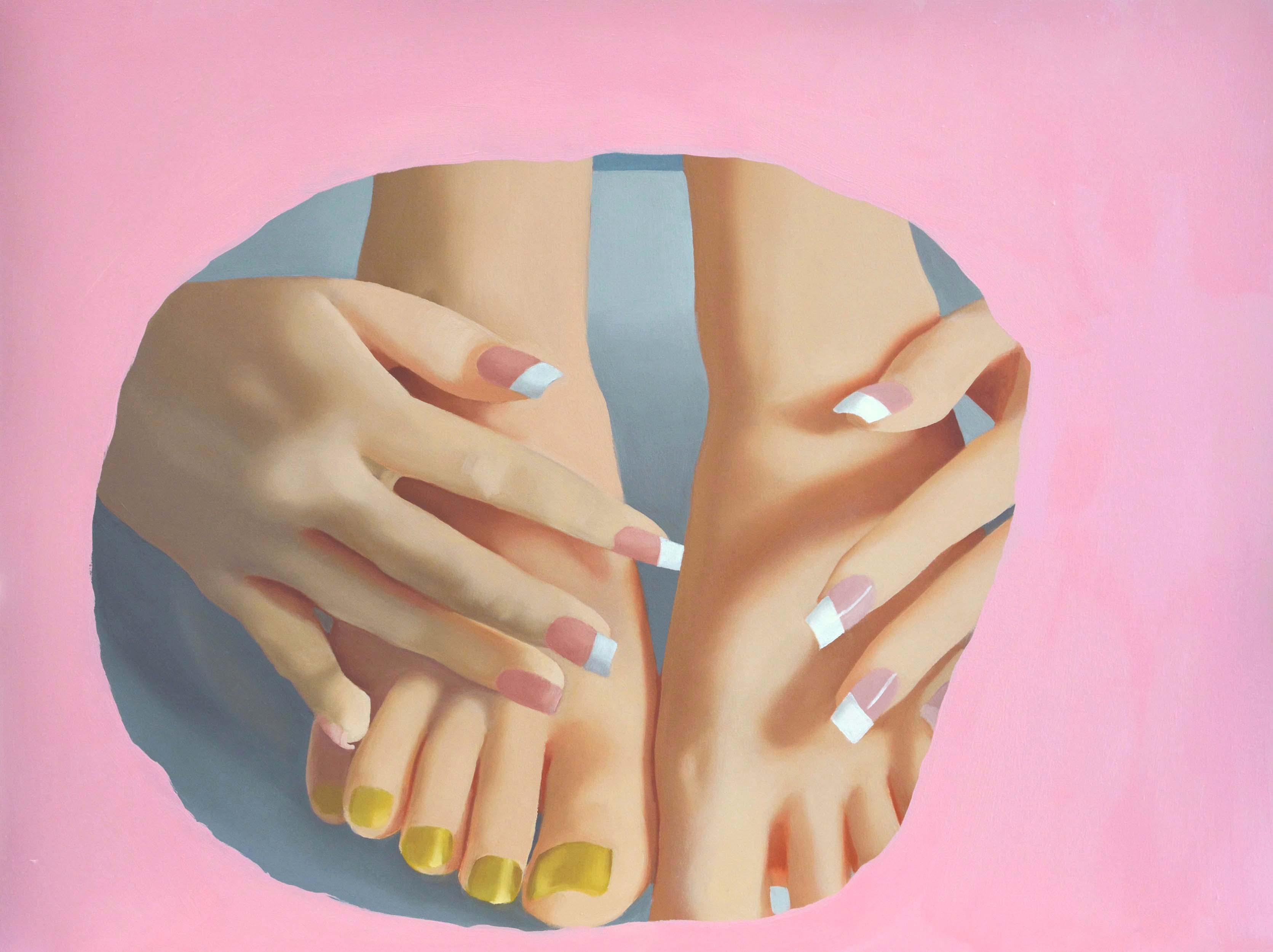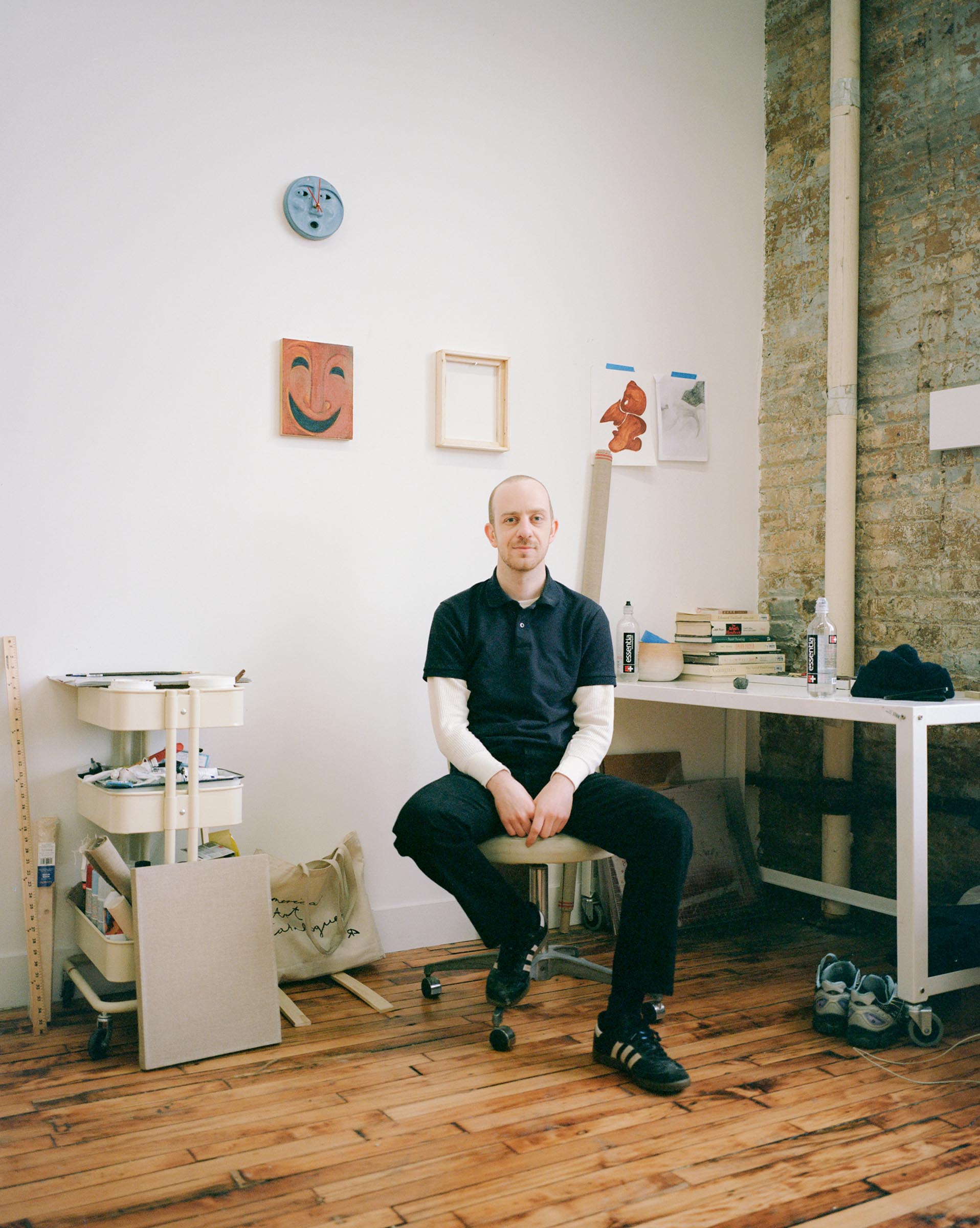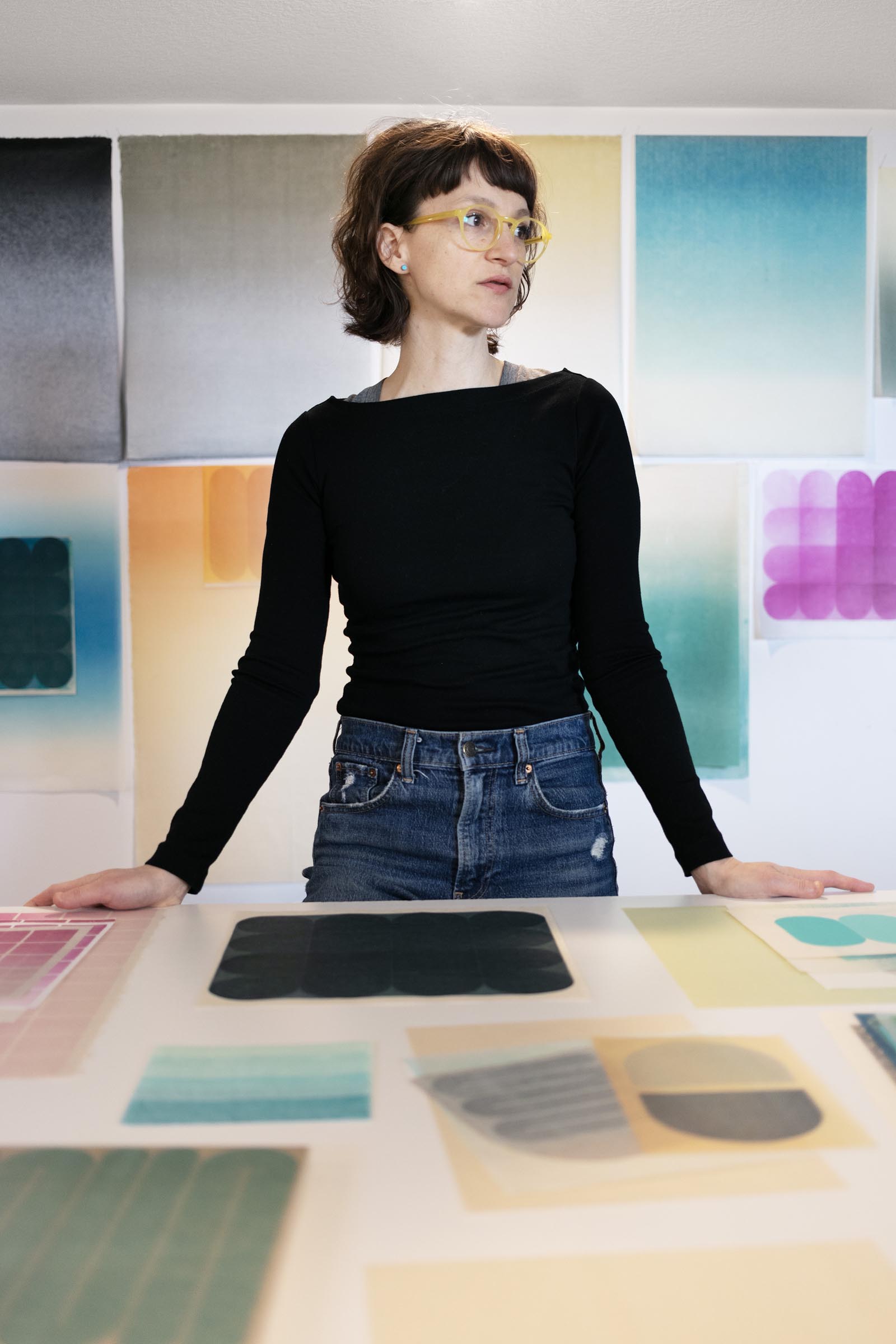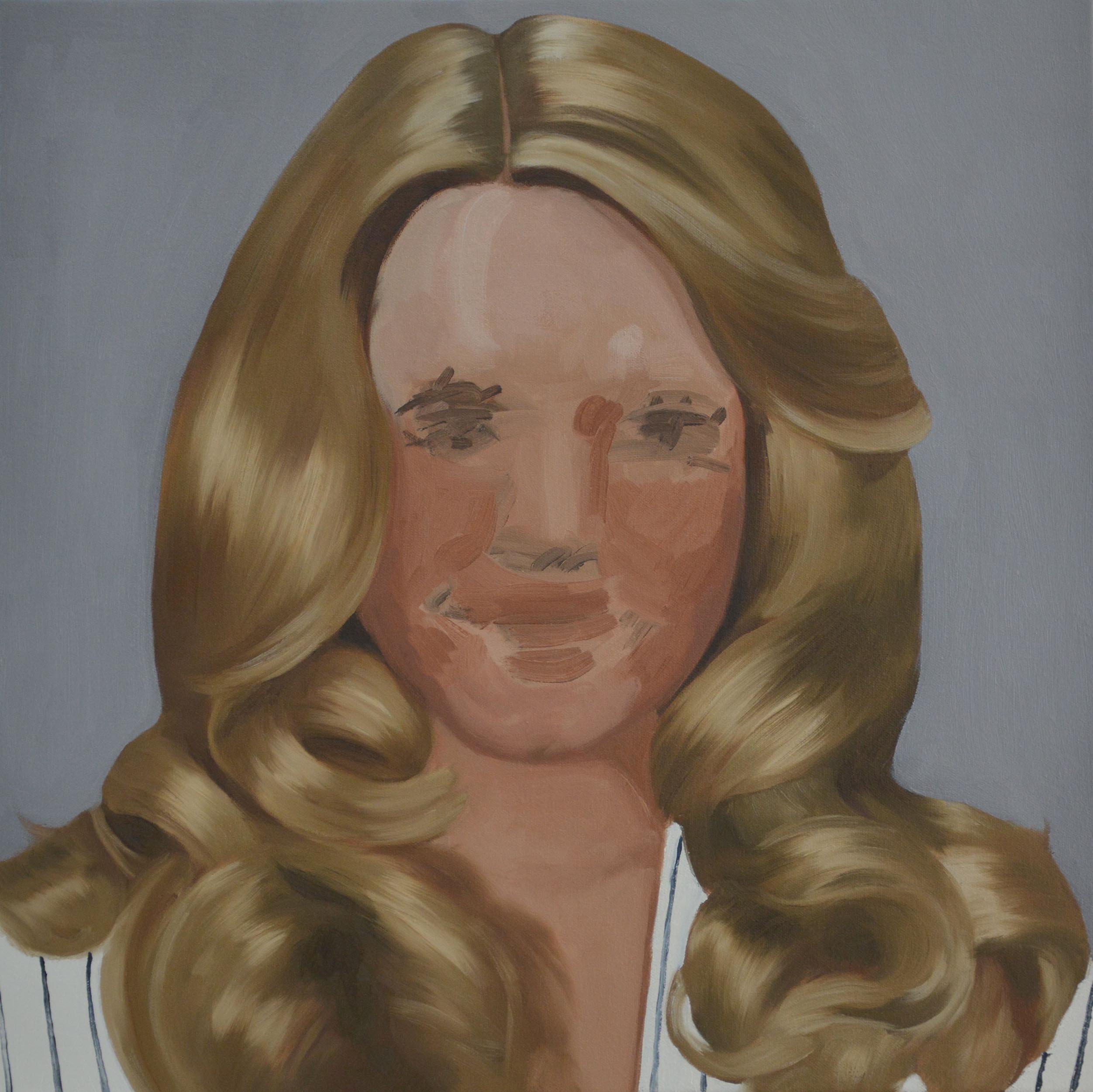
Butterface, oil on canvas, 18 x 18 inches
To start, tell us about yourself. What’s your background & how did you get into making art?
I don’t remember not being interested in the arts. In my junior year of high school I got the chance to attend a Blue Ribbon School, which was the Academy of the Arts, Science and Technology in South Carolina where I grew up. Instead of taking the usual high school electives, I got to study art. I jumped at the chance and learned most of the basics of my art education there, for which I am eternally grateful. I attended University at the College of Charleston where I was taught the foundation of art through art history, actually creating work, and learning different ways to see art. I studied painting, drawing, sculpture, and how to pay an electric bill. For the first time I worked on my own ideas in a studio environment. I got to see what it would be like to be a painter and what that could mean, however non-financially viable or marketable that was. Earning my Bachelor of Arts in Studio Art gave me structure and a well-rounded awareness in my fine arts education. The hard part started when I moved to New York and began working in my own studio and had to face my own ideas and assumptions, without anyone navigating what I did. New York was, and still is, a good stern teacher with a multitude of resources. There is nothing that can replace the day to day experiences of dealing with galleries, museums, and the general unglamorous logistics of how to ship a painting across the country to an exhibition and make a return label.
What are you currently working on? Describe your most recent body of work.
For the first six years of painting seriously I worked mainly on portraiture. I love John Currin and I really enjoyed entertaining the idea of what it meant to make a portrait. How far can you push a portrait to become something other than a functional or academic work? About a year ago I started to feel like I exhausted that subject. To challenge myself I began trying to work with full figures, and only using black and white, and so began my new body of work. This work explores more the interaction of figures and their movement. And while I could never let go of my beloved portraiture completely, there are some black and white portraits where I have experimented with different surfaces and textures. There has also been a shift in reference images, where the majority used to be from the internet, they are now mostly from vintage photos I have bought. The paintings sometimes turn out a littler weirder that way. It has already opened more doors, we’ll see where it goes from here.
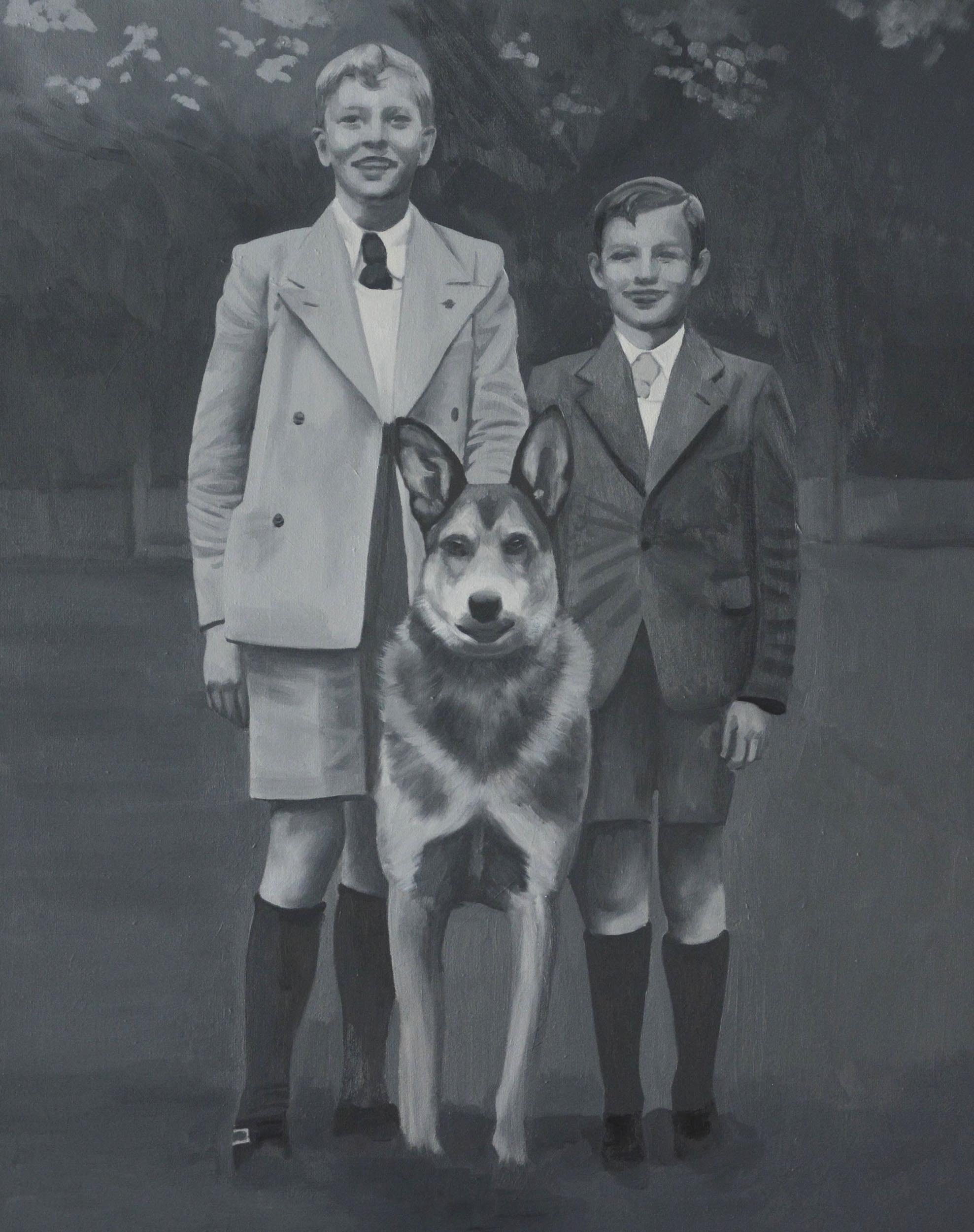
Milk Teeth, oil on canvas, 24 x 30 inches
Where do you find inspiration when starting a new body of work?
It is usually a natural transition when a new body of work begins. I don’t really decide, consciously out loud, that I will now make a new body of work, there becomes a subtle transition and a natural conclusion with the old work. You begin to see the differences start to emerge. I follow those natural interests and rhythms and they usually guide themselves to the new work.
Do you work in distinct projects or do you take a broader approach to your practice?
I typically take a broader approach to my painting, If I keep my head down and paint whatever I am currently interested in, it tends to take shape on its own. Although sometimes I do work for months and then take a step back and there is no cohesive thought taking shape. Then it is time to reassess and try to get out of the slump. Looking back, the silver lining of those moments is that they usually end up being the most experimental time, and the persistent ideas that arise become the guide for the next body of work.
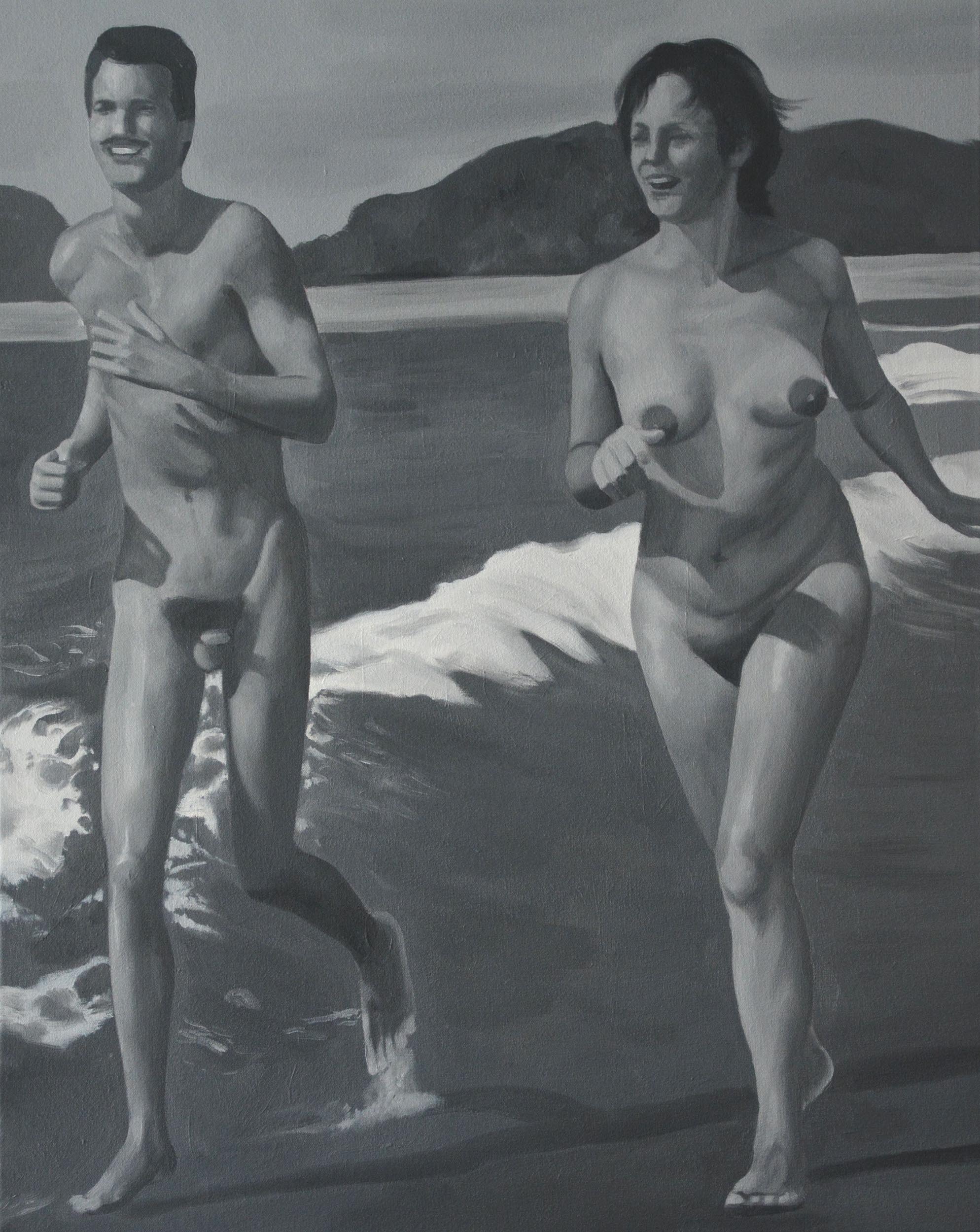
Sweetheart Swindle, oil on canvas, 24 x 30 inches
Describe a day in your studio. What is your schedule like, how do you divide your time?
I am fortunate enough to paint full time. I wake up around 7:30 AM and go through the usual morning routine. At about 9 AM I am in the studio answering emails or messing with images. I paint until about noon, then I go meet my husband at his work where we have lunch together. I come back and work for the rest of the day, hopefully productively painting instead of napping. Sometimes if painting isn’t going well I will put a piece of paper up on the wall and make a quick charcoal drawing to get going. In the evening I use that time to find future reference images, explore 80’s hairstyles that would be fun to paint, and try to look for open calls and exhibitions to apply my work to. Also, if I have enough energy, clean my brushes.
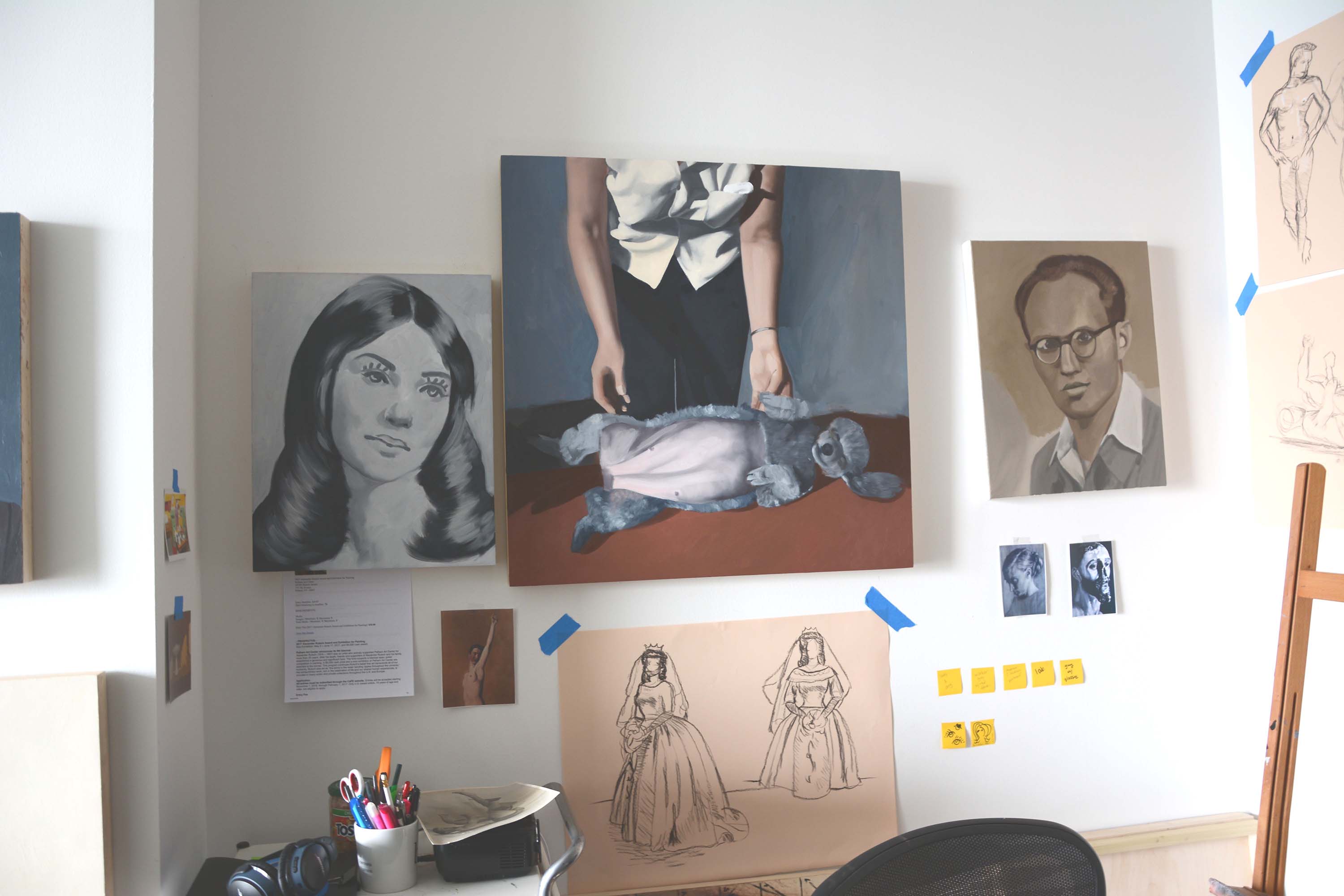
Kerdman's studio, 2019
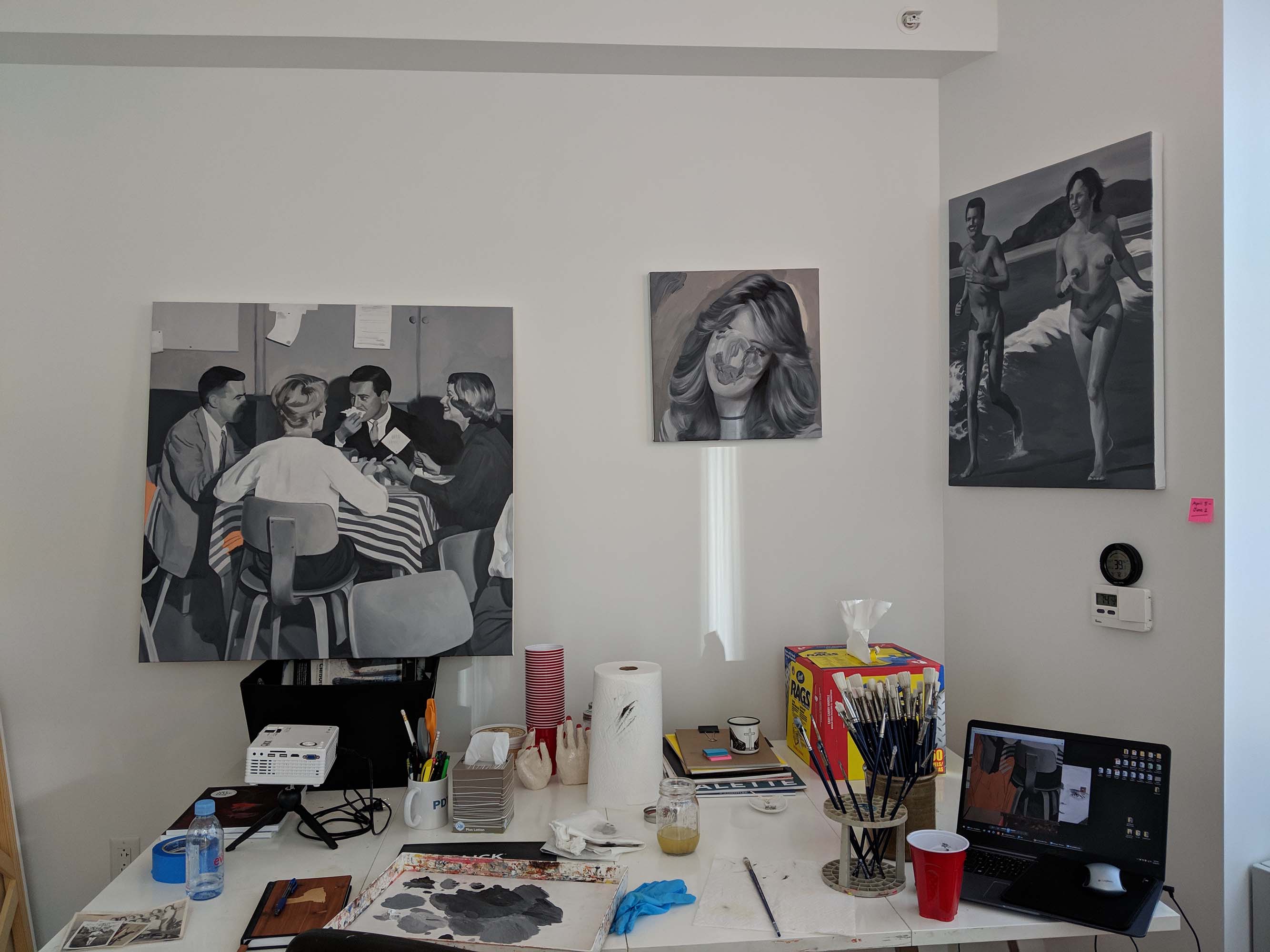
Kerdman's studio, 2019
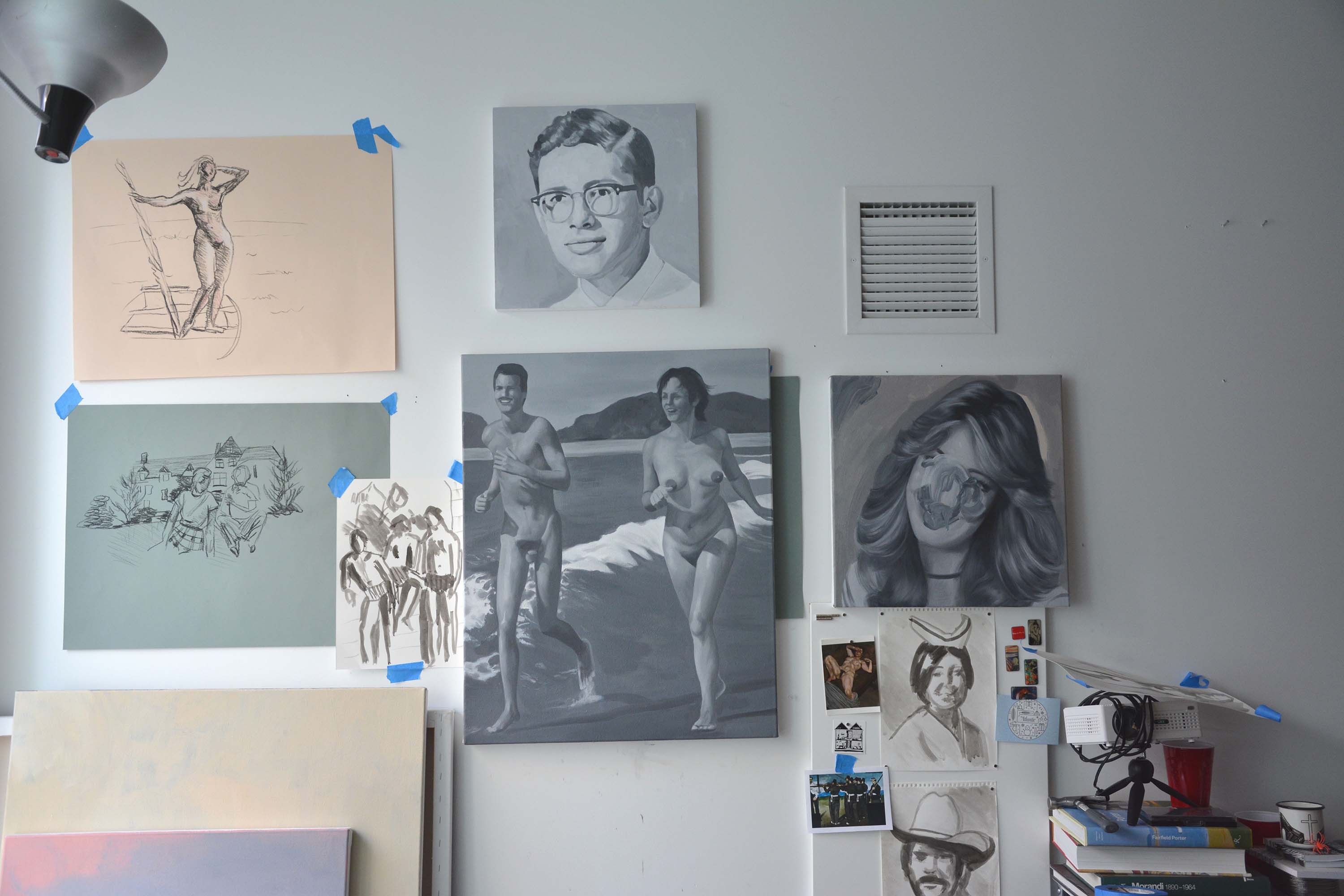
Kerdman's studio, 2019
Has your practice been influenced by technological changes/advances either online or through social media?
Google images and general search plays a big role in my work. It’s where I can research ideas and go down the rabbit hole of interesting or weird pictures to paint. Years ago, online, someone called me out for this method, saying it wasn’t what real artists did and that I was a hack. Whether or not this guy had a point, it stuck with me and made me try to look elsewhere for other references. I ended up using Etsy, where I buy vintage photographs from sellers online. It gave the work an odd, more unique direction. I still use online images as source material in addition to the Etsy photos, because I don’t agree with that guy, and I have gotten some strong paintings out of this process. And to be fair, since then I have seen different painters use the same image from google for their work, so it is also a good way to ensure no one else will have this image I am about to paint. So, way to turn a negative into a positive. Although I no longer have an Instagram account, I really tried to make it work for my art. I really liked meeting new artists and of course getting that dopamine rush from people telling me how great my work was, but it ultimately was more harmful than good for me. I found myself worrying more and more what other people thought of the work. I wanted to make hits all the time so I didn’t take as many risks with the work. I became less and less productive, wasting my free time scrolling, comparing my work to others and wondering why I wasn’t as good or as far along in my career. After two years I closed my account and slowly the work got stronger. I have gotten into more exhibitions and more magazines than in the couple of years. I also have my first real solo show in April. What can I say, I’m not very good when people are watching me. It brought out the people pleaser in me. I felt under pressure to produce, and painting is a slow game.
What are some of the most rewarding aspects of art making?
One of my favorite things to do is to put paintings from ten years ago side by side with my current work. I truly find being able to tangibly see my progress and my eye develop very satisfying. I love pulling out an old, horrible painting and being able to really see it. I also enjoy when people tell me what they see in the work that I have been completely unaware of. I like hearing their sharp interpretations of the work and then pretending it was my intention all along. People can really create beautiful conclusions in the work and it makes me feel humbled. Ultimately the best is getting lost while making the work.
Where do you go to discover new artists?
I do my best to keep my eyes open all the time for good art and artists. Going to exhibitions is a great way to see what everyone is up to and who is out there. I am always looking up names, checking out artist websites and looking at their Instagram. There isn’t really one way I find artists. If I get into a juried show I will look up the artists I am showing with. I check out ArtMaze Mag, Jealous Curator, Create!Mag, and New American Paintings’ Instagram pages frequently to see who they’re featuring. I have a Saatchi profile where I sell my work and keep up with artists there as well. I’ve been loving ceramics lately, and Etsy has some talented porcelain and ceramic artists. I also do my best to keep up with the artists I have learned about years ago and check in on their new work and progress. I have a Pinterest page to keep track of all the work I like and it helps to show themes I am interested in and can inform my own painting. It’s best to wander, and sometimes you can find great things.
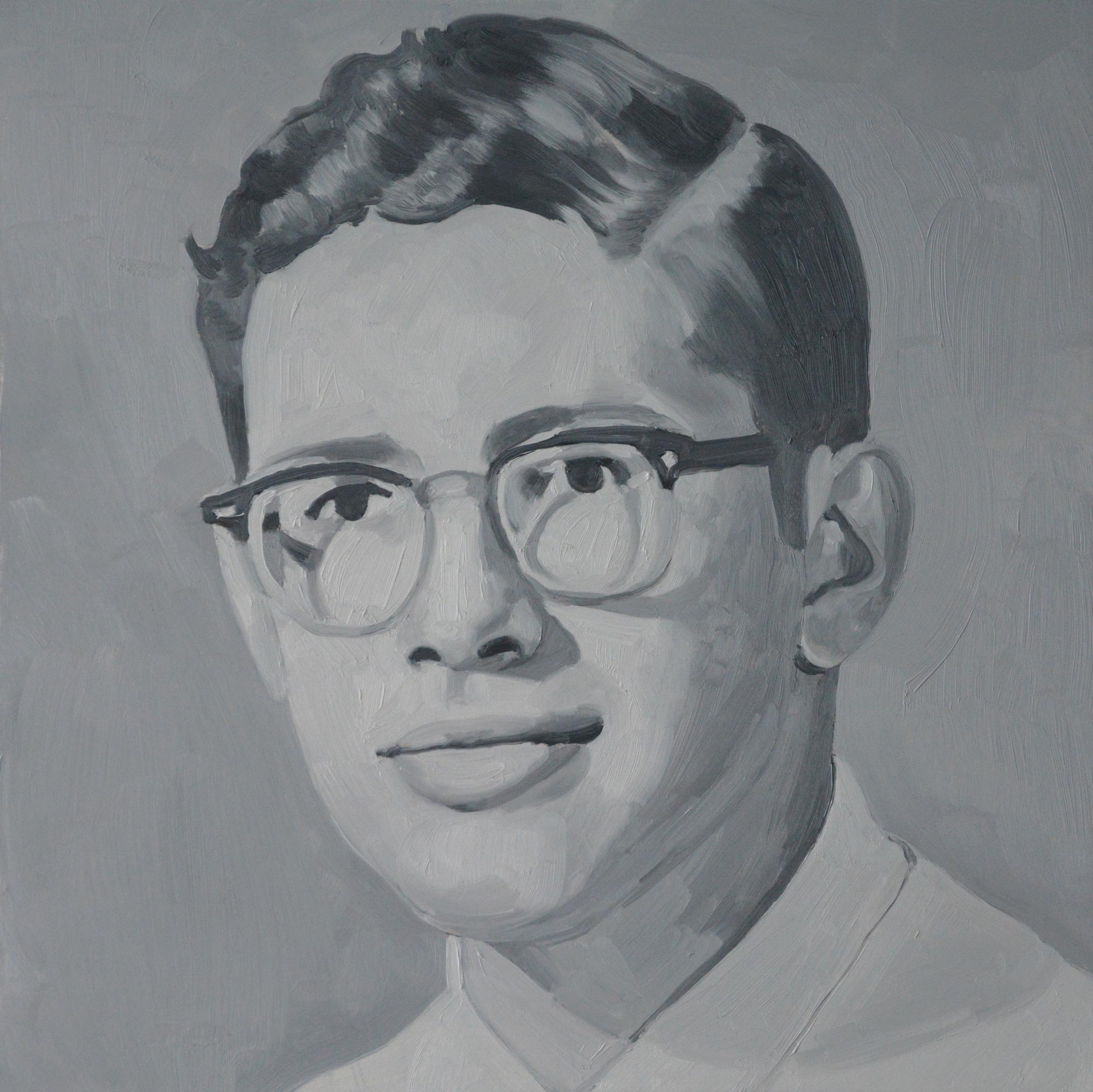
Boy Next Door, oil on clayboard, 16 x 16 inches
How did you get your first exhibition?
My first exhibition was in college. It was a juried exhibition at the Halsey Gallery at College of Charleston. The juror was Marc Trujillo, a Hyperrealist painter. I entered an oil painting of a teddy bear and a painting on wood of a goat. Somehow, they both made it in and the goat won a President’s Award! I was thrilled, and I got one hundred dollars. I wanted to do that forever.
What methods do you find most productive in promoting your work?
I find that entering into whatever feasible opportunity there is available, is a great way to get going and get your work out there. Sometimes that can come in the form of answering an open call, or a magazine, etc. Just be as vulnerable and naive as possible. I enter into shows I know are above my pay grade, and on one or two occasions it has worked out. Talking to people and other artists is a great way also. I send emails to artists just to say I like their work, or if I can, I will buy their work or trade work with them. People really remember these things. I try to do studio visits if I can, since I am fortunate enough to be in NYC. I once saw a free open call on Create! Magazine’s Instagram page for work about tattoos. It was different than their usual, annual open calls for their magazine. A side project they were promoting, I believe. I had one portrait of a guy with a tear drop tattoo on his face and applied with that. It got in, and only five other people did as well. After the show, the owner of the tattoo shop/gallery was kind enough to invite me to do a solo exhibition the following year. These things snowball so it’s important to keep an open mind and be kind. I know people say social media is great for promoting their art, but in the two years I was on Instagram and Tumblr, it was largely quiet. Obviously, that was just my experience. Maybe I wasn’t doing it right.
Learn More
Tracy Kerdman was one of 5 winners of the inaugural Hopper Prize, where she received an individual artist grant. To learn more about Tracy and her work:
- Explore Tracy Kerdman‘s grant winning portfolio
- Visit her website at www.tkerdman.com
- For sales, available works, and other inquiries, visit Tracy’s profile at Saatchi
- To get in touch with Tracy directly, send her a message through her site!
